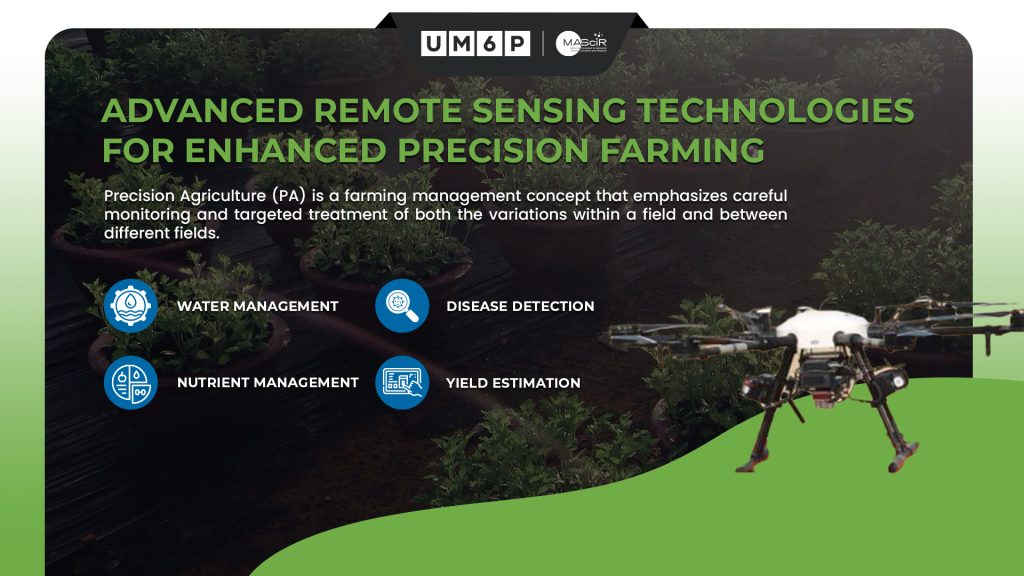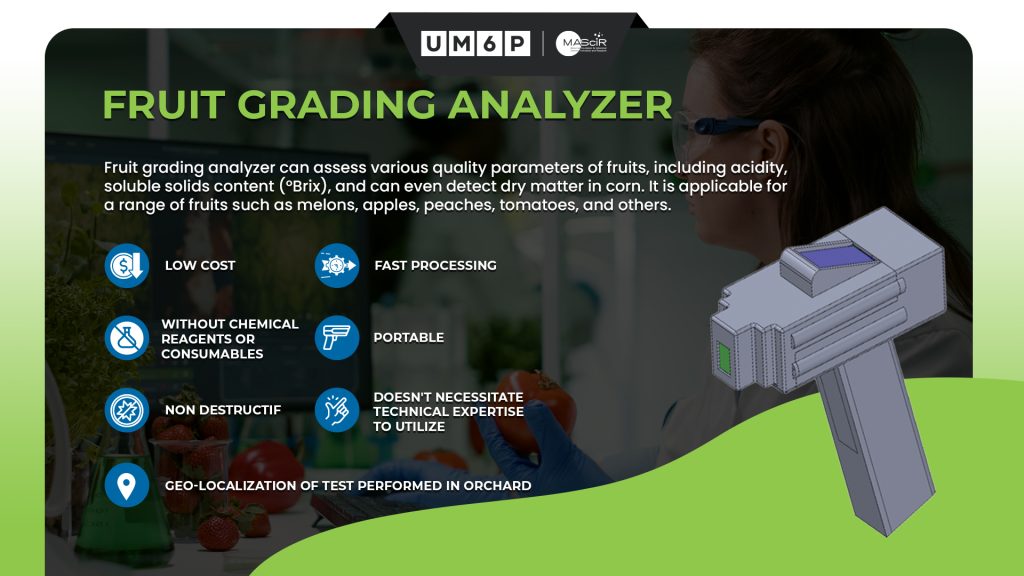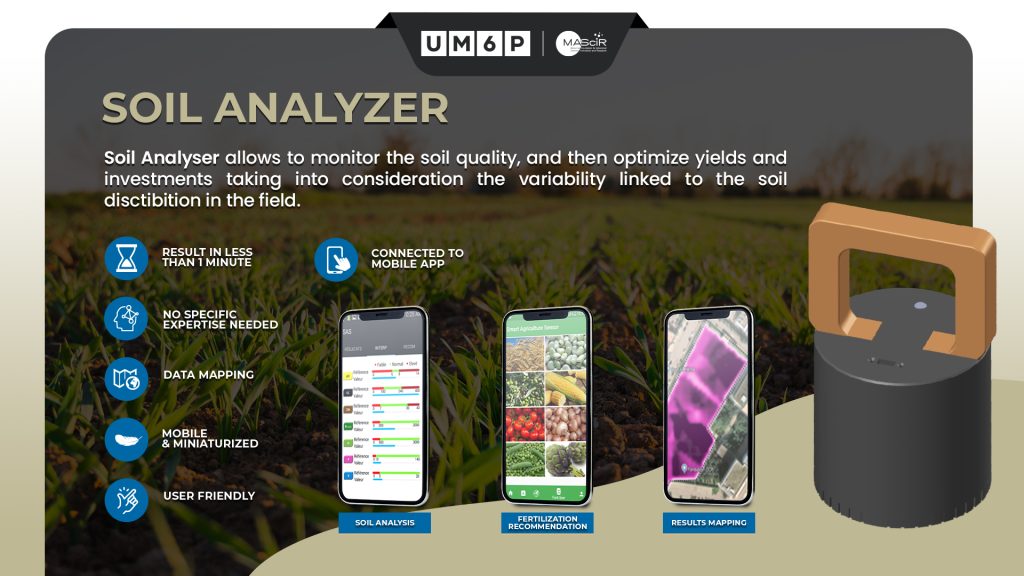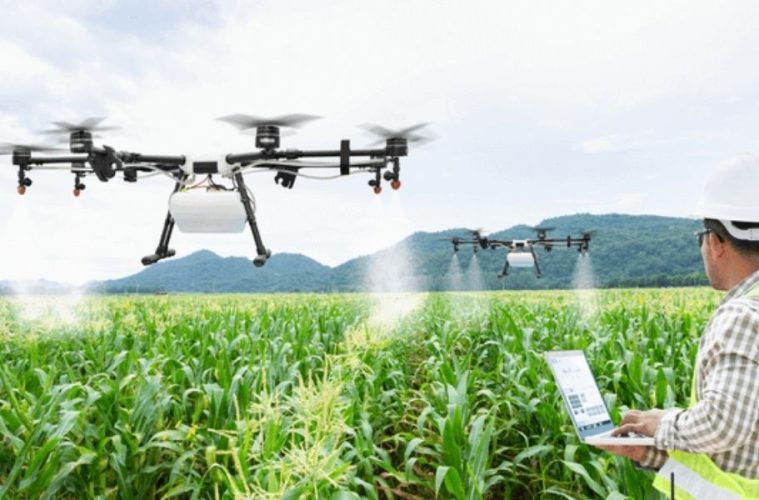The LiDAR project, one of the Centre d’Optique et Photonique’s strategic projects, was designed and carried out under the direction of Professor Zouheir Sekkat. In terms of precision agriculture, the Lidar project has developed a cutting-edge technological platform based on the use of a hexacopter drone equipped with a multispectral camera and a lidar (Light Detection And Ranging).
The hexacopter, a six-rotor drone, is designed to offer optimum stability, a large load capacity, remarkable reliability and precision adapted to complex agricultural operations. These tools enable us to analyse agricultural plots, detect water stress, estimate yields, identify nutrient deficiencies due to biotic and abiotic stresses, and produce accurate 3D mapping of fields.
LIDAR, a cutting-edge technology, emits laser beams in the form of pulses of light. By measuring the time it takes for these pulses to return after being reflected by surfaces, we can create highly detailed 3D models. These models provide valuable information about the topography of the land, enabling us to assess crop density and identify areas where plant growth is impaired. This data is of crucial importance to farmers, enabling them to optimise their cultivation practices.
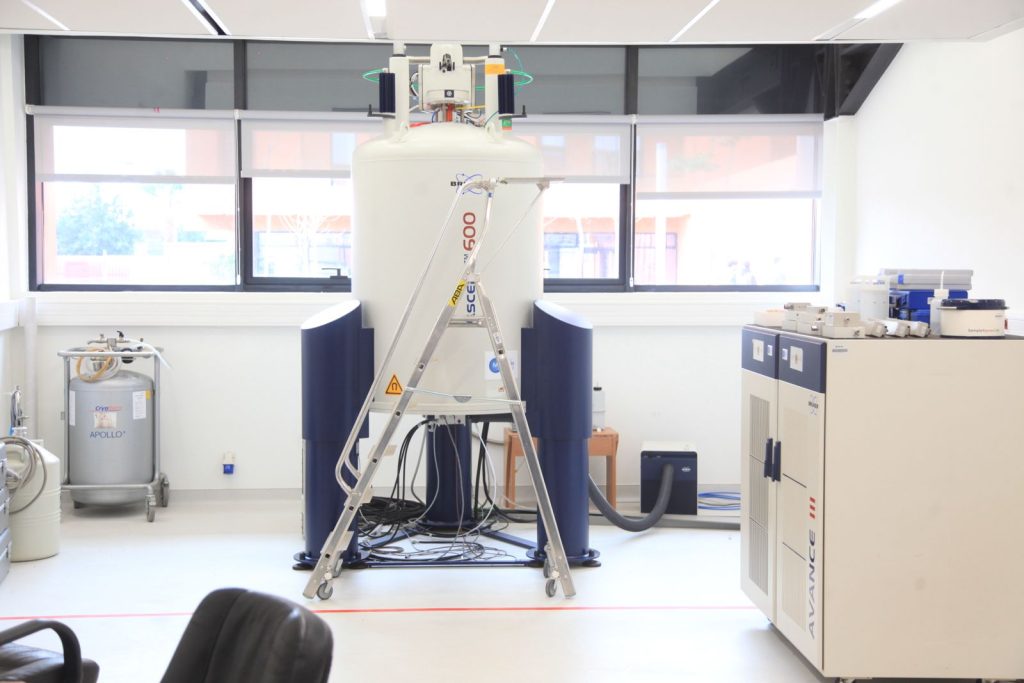
Spectroscope RMN, Plateforme technologique de la Fondation MAScIR
The multispectral camera offers imaging capabilities well beyond human vision. Unlike traditional cameras, it captures images at several wavelengths, including infrared. The camera we use has five main spectral bands, plus a sixth thermal band for capturing infrared. These features enable us to gather detailed information on plant health by analysing specific agronomic indices.
By interpreting the data from the multispectral camera, it is possible to predict or diagnose problems such as water stress or nutrient deficiencies. By combining the information from the camera and lidar, we obtain a global view of agricultural plots. This holistic approach helps farmers to make informed decisions on irrigation, fertilisation and disease protection.
Artificial intelligence plays a role in our approach. After identifying sources of stress, we develop AI-based predictive models. These models provide an in-depth analysis of the nature of the stresses.
Our approach focuses on three main areas:
– Development of the technological platform, including calibration, sensor synchronisation and GPS data correction.
– Data collection and processing using specialised software.
– The use of artificial intelligence for applications such as disease prediction and agricultural yield estimation.
A start-up company is being set up to democratise this technology and make it accessible to farmers. This start-up will be able to intervene directly in customers’ fields, collect data, analyse it and provide maps and vegetation indices. This information will give farmers an accurate picture of the health of their crops.
